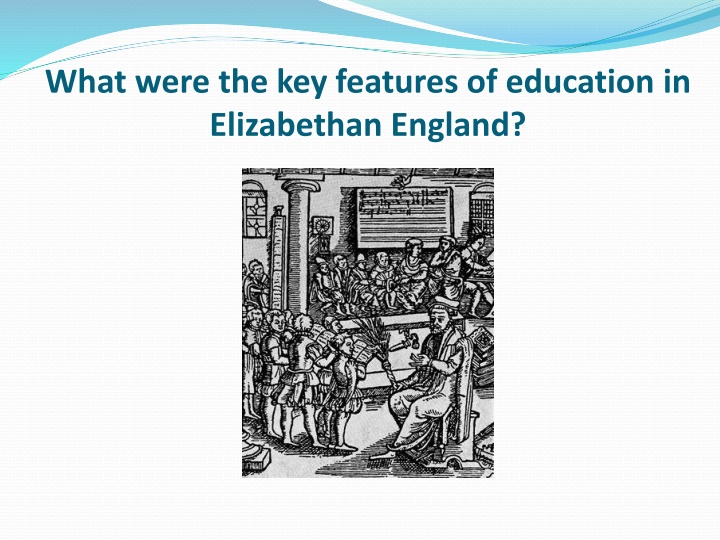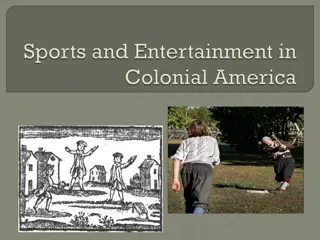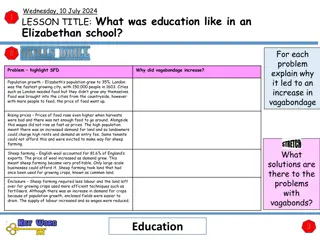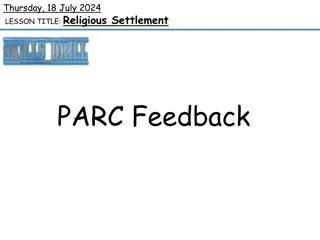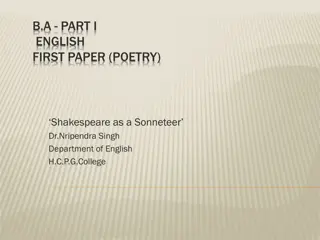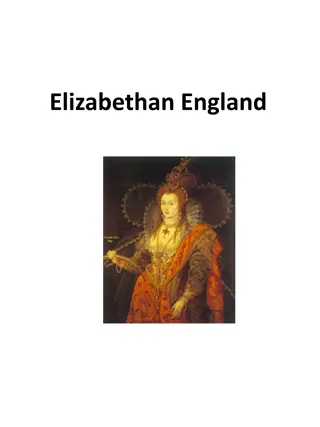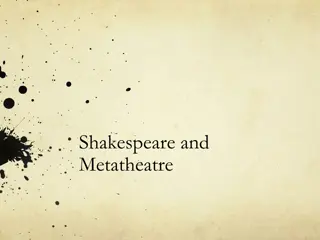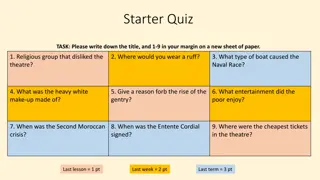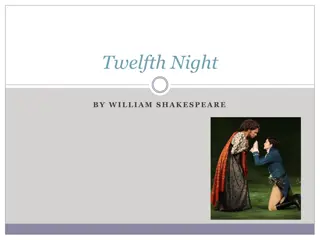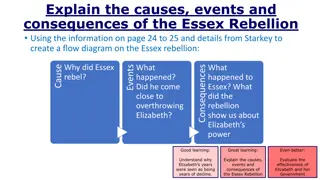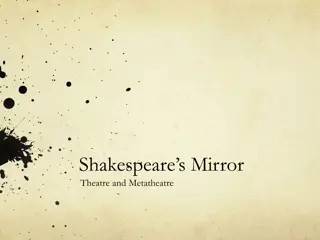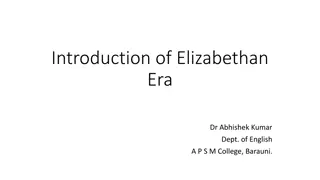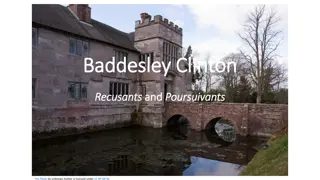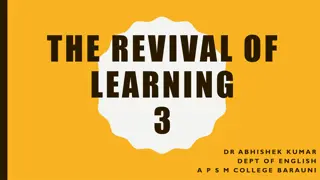What were the key features of education in Elizabethan England?
Explore the key features of education in Elizabethan England, including attitudes towards education, new influences, education for the nobility, and the development of grammar schools. Discover how education changed during this era and its impact on society.
Download Presentation

Please find below an Image/Link to download the presentation.
The content on the website is provided AS IS for your information and personal use only. It may not be sold, licensed, or shared on other websites without obtaining consent from the author.If you encounter any issues during the download, it is possible that the publisher has removed the file from their server.
You are allowed to download the files provided on this website for personal or commercial use, subject to the condition that they are used lawfully. All files are the property of their respective owners.
The content on the website is provided AS IS for your information and personal use only. It may not be sold, licensed, or shared on other websites without obtaining consent from the author.
E N D
Presentation Transcript
What were the key features of education in Elizabethan England?
Learning objective to be able to explain the changes in education in the Elizabethan era. I can explain the key reasons why education Elizabethan changed. Grade 6 I can explain and assess the reasons education Elizabethan changed. Grade 9 I can describe the key reasons why education Elizabethan changed. Grade 3 the the era why the era the the era in in in
What were attitudes towards education? There was no national system of education but there was a growing sense of its importance in society. However, what did not change was its view on the purpose of education to prepare you for your expected role in society. Education did not nurture ambition and talent or allowed social mobility.
What new influences were there in Elizabethan education? The growth of humanist thinkers and writers saw more people arguing that education was valuable and not a way of pigeon holing people into specific roles in society. Protestants argued for better education as they believed people should be able to read and interpret scripture for themselves. The growth of the printing press meant that books became less expensive and more people had access to books. The growth of trade required people to be competent in English and maths if they were to be a success.
What type of education did the nobility receive? Children from the nobility gained a broad education in the classical subjects, such as Latin and History. Girls received a level of education, focusing on such skills as horse riding. Both girls and boys were educated at home but separately from the age of 7. To finish their education, noble children were sent to another family, mainly to network.
How did grammar schools develop in Elizabethan England? The number of grammar schools increased significantly in Elizabethan England. They were independent of the Church and charged fees. The level of fees were based upon property ownership., although scholarships were available for poorer boys who showed academic promise. Grammar schools were for boys only from the middling classes. Holidays were limited to Christmas and Easter and the school day lasted almost ten hours and subjects were heavily biased towards the classics. Although a more practical curriculum was offered to boys from merchant and craftsman families. However, some craftsman families preferred to send their boys on an apprenticeship.
What alternatives to grammar schools were there? Boys aged up to 10 years old from gentry and merchant families were offered petty schools, which were run in teachers homes. Harsh in punishments with a curriculum that focused upon reading, writing and arithmetic. Dames Schools were for girls from middling families. Run by wealthy women in their own homes, the type of education they offered focused around domestic skills. Image result for Elizabethan education
What education was on offer to those children from poorer backgrounds? Most children had no formal education as they were from labouring and agricultural backgrounds. They learned what they needed from their families. In many cases, children were sent out to work at an early age as the family needed the income. In some cases, Parish Schools were available to yeomen and farming families which offered a basic education up to the age of 10.
What level of higher education was on offer? Only two universities were on offer Oxford and Cambridge attendance could start from the ages of 14 or 15. and It offered a broader, more specialised curriculum, including subjects such as Medicine and Geometry. The highest qualification on offer was the doctorate.
How far did schools change Elizabethan England? It was estimated that there was a 10% increase in literacy in boys and no increase for girls during Elizabethan England. The main barrier to education was cost not only with fees but also down to loss of family income if children were not working. There was an increase in education provided by private bodies rather than the Church.
Task Complete the table below including information about what students learned, where they went to school and how long they went to school. Boys Girls Rich Well-off Poor
Knowledge questions Complete the following questions in full sentences. Account for the main reasons why there was a growing emphasis on education in Elizabethan England. What type of education was offered at Grammar Schools Dames Schools Parish Schools Petty Schools 1. What changed and what stayed the same in education during the Elizabethan era? 1. 2.
Plenary Compare and contrast education now with education in the Elizabethan times. List at least three differences and three similarities.
